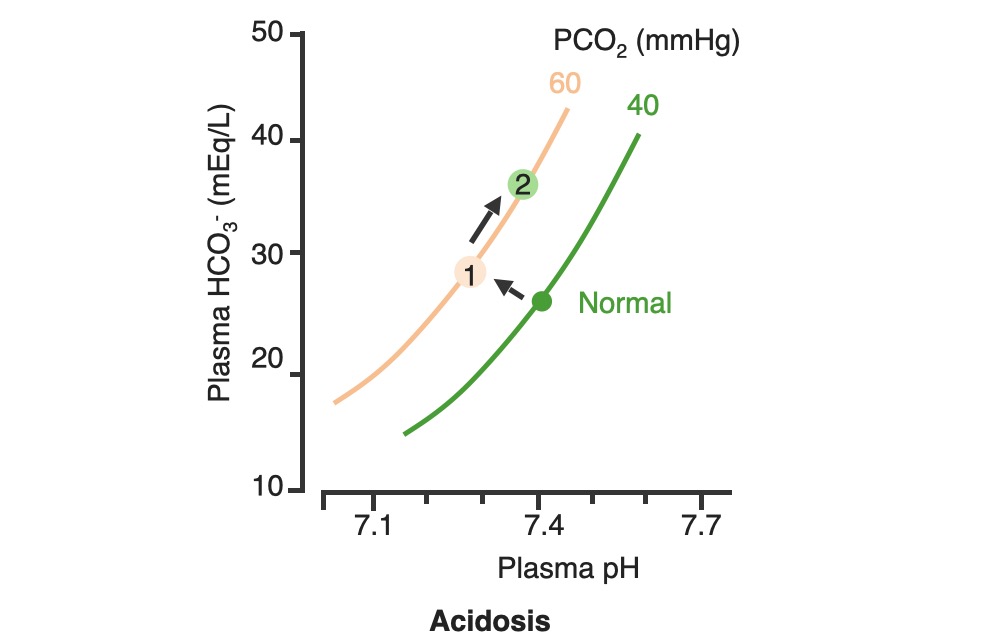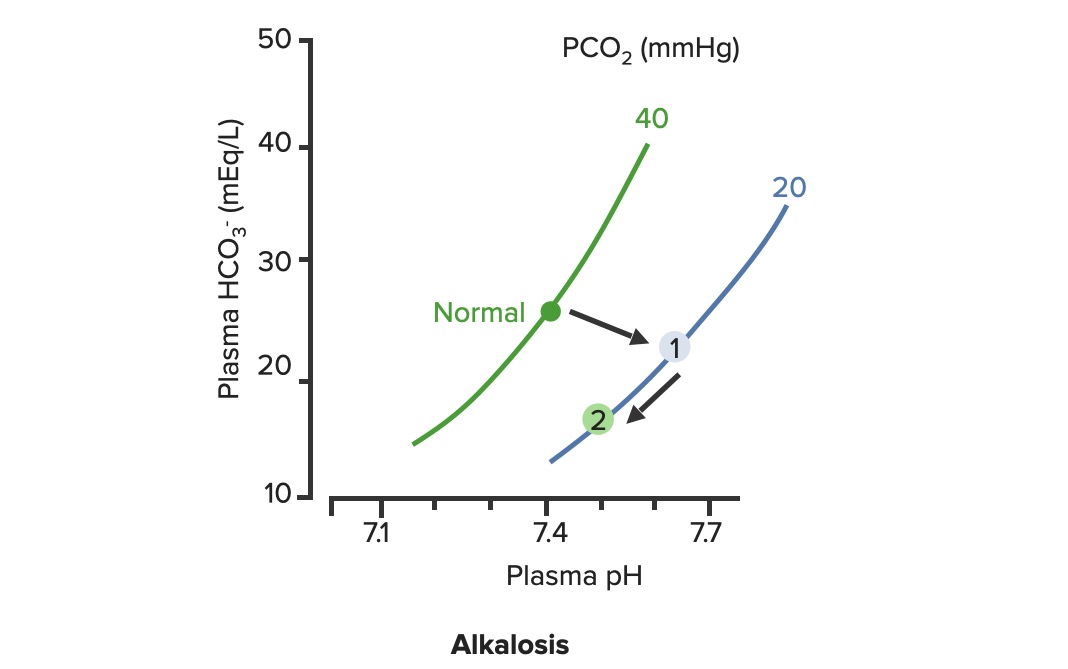Playlist
Show Playlist
Hide Playlist
Alveolar Gas Equation – Hypoxemia and Hypercapnia
-
Slides 04 HypoxemiaHypercapnia RespiratorySystem.pdf
-
Download Lecture Overview
00:00 Okay. 00:01 So now, we need to figure out what these alveolar PO2s and CO2s are. 00:10 Unfortunately, when you do an arterial blood gas measurement, you do not get an alveolar gas concentration. 00:19 But we need to know this to be able to go through a differential diagnosis of hypoxemias. 00:24 For CO2, it’s rather easy because you can substitute your PaCO2 for your PACO2. 00:35 So these are interchangeable numbers. 00:38 For O2, you cannot do this and so we have to eventually calculate it. 00:47 Fortunately, we have the alveolar gas equation, that allows for us to calculate this parameter. 00:52 Lucky for us, we can usually simplify this formula into this reduced equation. 01:00 So let’s go through this reduced equation in a little bit more detail. 01:04 PAO2, meaning alveolar O2, is going to be equal to your inspired O2, which is PIO2, minus 1.2 times your PaCO2, which is your arterial partial pressure of carbon dioxide. 01:23 And then we add in the number 2. 01:27 This will give us the millimeters value for PACO2. 01:34 You might, “Well, how in the world did you get this 1.2 number and this 2?” These are things that we can reduce from that above equation that’s a little bit more complex. 01:44 So this works pretty much on most standard conditions. 01:49 We don’t have to use the derived formula.
About the Lecture
The lecture Alveolar Gas Equation – Hypoxemia and Hypercapnia by Thad Wilson, PhD is from the course Respiratory Physiology.
Included Quiz Questions
Under standard conditions, the alveolar gas equation's PaCO2 coefficient is what?
- 1.2
- 1.5
- 1.8
- 2.1
- 3.0
Customer reviews
5,0 of 5 stars
| 5 Stars |
|
5 |
| 4 Stars |
|
0 |
| 3 Stars |
|
0 |
| 2 Stars |
|
0 |
| 1 Star |
|
0 |






